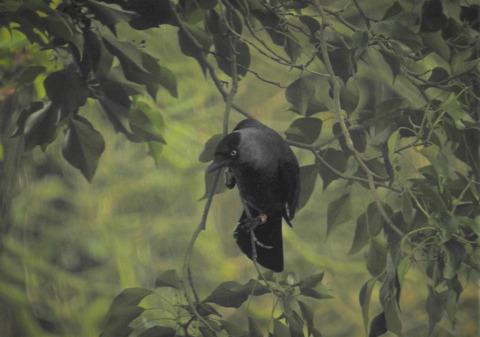当前位置:
X-MOL 学术
›
J. Anim. Ecol.
›
论文详情
Our official English website, www.x-mol.net, welcomes your feedback! (Note: you will need to create a separate account there.)
Experimentally increased brood size accelerates actuarial senescence and increases subsequent reproductive effort in a wild bird population
Journal of Animal Ecology ( IF 4.8 ) Pub Date : 2020-03-12 , DOI: 10.1111/1365-2656.13186 Jelle J Boonekamp 1, 2 , Christina Bauch 1 , Simon Verhulst 1
Journal of Animal Ecology ( IF 4.8 ) Pub Date : 2020-03-12 , DOI: 10.1111/1365-2656.13186 Jelle J Boonekamp 1, 2 , Christina Bauch 1 , Simon Verhulst 1
Affiliation

|
Abstract The assumption that reproductive effort decreases somatic state, accelerating ageing, is central to our understanding of life‐history variation. Maximal reproductive effort early in life is predicted to be maladaptive by accelerating ageing disproportionally, decreasing fitness. Optimality theory predicts that reproductive effort is restrained early in life to balance the fitness contribution of reproduction against the survival cost induced by the reproductive effort. When adaptive, the level of reproductive restraint is predicted to be inversely linked to the remaining life expectancy, potentially resulting in a terminal effort in the last period of reproduction. Experimental tests of the reproductive restraint hypothesis require manipulation of somatic state and subsequent investigation of reproductive effort and residual life span. To our knowledge the available evidence remains inconclusive, and hence reproductive restraint remains to be demonstrated. We modulated somatic state through a lifelong brood size manipulation in wild jackdaws and measured its consequences for age‐dependent mortality and reproductive success. The assumption that lifelong increased brood size reduced somatic state was supported: Birds rearing enlarged broods showed subsequent increased rate of actuarial senescence, resulting in reduced residual life span. The treatment induced a reproductive response in later seasons: Egg volume and nestling survival were higher in subsequent seasons in the increased versus reduced broods' treatment group. We detected these increases in egg volume and nestling survival despite the expectation that in the absence of a change in reproductive effort, the reduced somatic state indicated by the increased mortality rate would result in lower reproductive output. This leads us to conclude that the higher reproductive success we observed was the result of higher reproductive effort. Our findings show that reproductive effort negatively covaries with remaining life expectancy, supporting optimality theory and confirming reproductive restraint as a key factor underpinning life‐history variation.
中文翻译:

实验增加的育雏大小加速了精算衰老并增加了野生鸟类种群的后续繁殖努力
摘要 生殖努力降低躯体状态、加速衰老的假设是我们理解生活史变异的核心。生命早期的最大生殖努力预计会因不成比例地加速衰老、降低健康而导致适应不良。最优理论预测,生殖努力在生命早期受到抑制,以平衡繁殖的适应度贡献与生殖努力引起的生存成本。当适应性强时,预测生殖抑制水平与剩余预期寿命成反比,可能导致生殖最后阶段的最终努力。生殖抑制假说的实验测试需要操纵躯体状态和随后的生殖努力和剩余寿命的调查。据我们所知,现有证据仍然不确定,因此生殖抑制仍有待证明。我们通过对野生寒鸦的终生育雏大小进行调节来调节体细胞状态,并测量其对年龄相关死亡率和繁殖成功的影响。支持终生增加育雏大小会降低体细胞状态的假设:饲养扩大育雏的鸟类随后显示精算衰老率增加,导致剩余寿命缩短。该处理在后期诱导了繁殖反应:在随后的季节中,增加育雏处理组与减少育雏处理组的蛋体积和雏鸟存活率更高。尽管预期在繁殖努力没有变化的情况下,我们还是检测到了鸡蛋体积和雏鸟存活率的增加,死亡率上升所表明的躯体状态下降将导致生殖产出降低。这使我们得出结论,我们观察到的更高的繁殖成功率是更高的繁殖努力的结果。我们的研究结果表明,生殖努力与剩余预期寿命呈负相关,支持最优理论并确认生殖抑制是支撑生活史变化的关键因素。
更新日期:2020-03-12
中文翻译:

实验增加的育雏大小加速了精算衰老并增加了野生鸟类种群的后续繁殖努力
摘要 生殖努力降低躯体状态、加速衰老的假设是我们理解生活史变异的核心。生命早期的最大生殖努力预计会因不成比例地加速衰老、降低健康而导致适应不良。最优理论预测,生殖努力在生命早期受到抑制,以平衡繁殖的适应度贡献与生殖努力引起的生存成本。当适应性强时,预测生殖抑制水平与剩余预期寿命成反比,可能导致生殖最后阶段的最终努力。生殖抑制假说的实验测试需要操纵躯体状态和随后的生殖努力和剩余寿命的调查。据我们所知,现有证据仍然不确定,因此生殖抑制仍有待证明。我们通过对野生寒鸦的终生育雏大小进行调节来调节体细胞状态,并测量其对年龄相关死亡率和繁殖成功的影响。支持终生增加育雏大小会降低体细胞状态的假设:饲养扩大育雏的鸟类随后显示精算衰老率增加,导致剩余寿命缩短。该处理在后期诱导了繁殖反应:在随后的季节中,增加育雏处理组与减少育雏处理组的蛋体积和雏鸟存活率更高。尽管预期在繁殖努力没有变化的情况下,我们还是检测到了鸡蛋体积和雏鸟存活率的增加,死亡率上升所表明的躯体状态下降将导致生殖产出降低。这使我们得出结论,我们观察到的更高的繁殖成功率是更高的繁殖努力的结果。我们的研究结果表明,生殖努力与剩余预期寿命呈负相关,支持最优理论并确认生殖抑制是支撑生活史变化的关键因素。



























 京公网安备 11010802027423号
京公网安备 11010802027423号